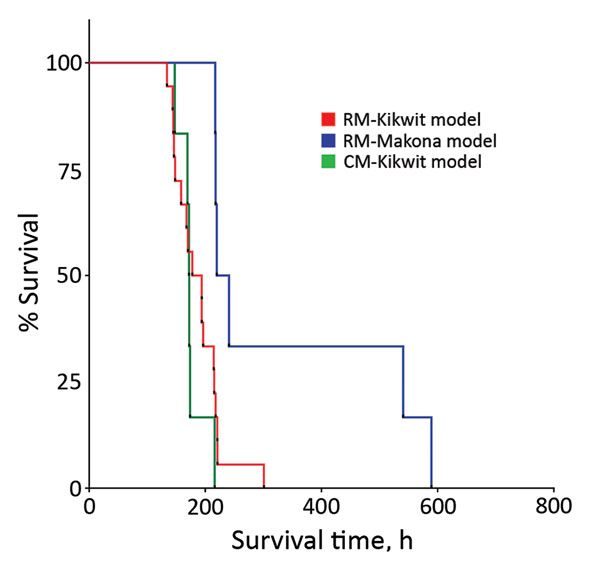Volume 23, Number 8—August 2017
Research
Clinical Laboratory Values as Early Indicators of Ebola Virus Infection in Nonhuman Primates
Figure 1

Figure 1. Kaplan–Meier survival analysis for each of 3 nonhuman primate models of Ebola virus disease: rhesus macaque model with EBOV Kikwit strain (n = 18 monkeys); rhesus macaque model with EBOV Makona strain (n = 6 monkeys); and cynomolgus macaque model with EBOV Kikwit strain (n = 6 monkeys). Overall comparison of the 3 Kaplan–Meier survival curves yielded a statistically significant value (p = 0.007) using the Mantel–Cox log-rank test. CN-Kikwit, cynomolgus macaque model of EBOV Kikwit strain; EBOV, Ebola virus; RM-Kikwit, rhesus macaque model of EBOV Kikwit strain; RM-Makona, rhesus macaque model of EBOV Makona strain.
Page created: July 17, 2017
Page updated: July 17, 2017
Page reviewed: July 17, 2017
The conclusions, findings, and opinions expressed by authors contributing to this journal do not necessarily reflect the official position of the U.S. Department of Health and Human Services, the Public Health Service, the Centers for Disease Control and Prevention, or the authors' affiliated institutions. Use of trade names is for identification only and does not imply endorsement by any of the groups named above.